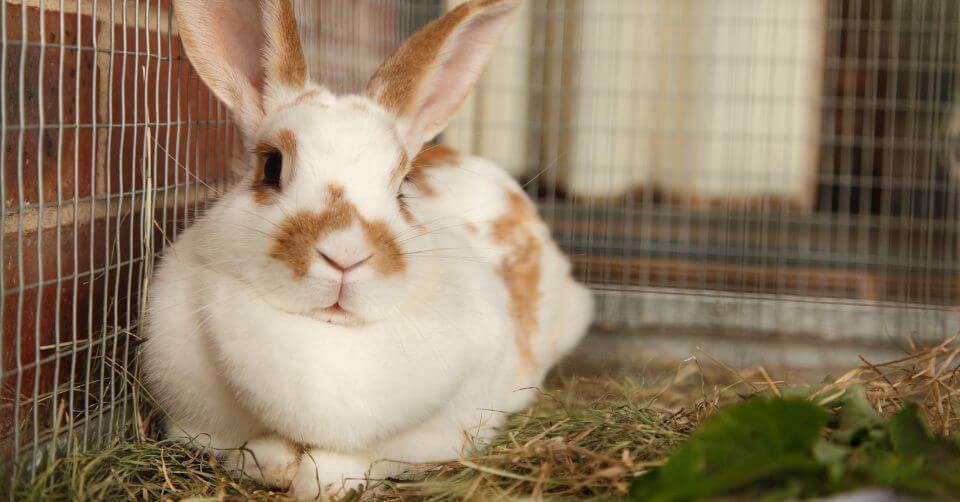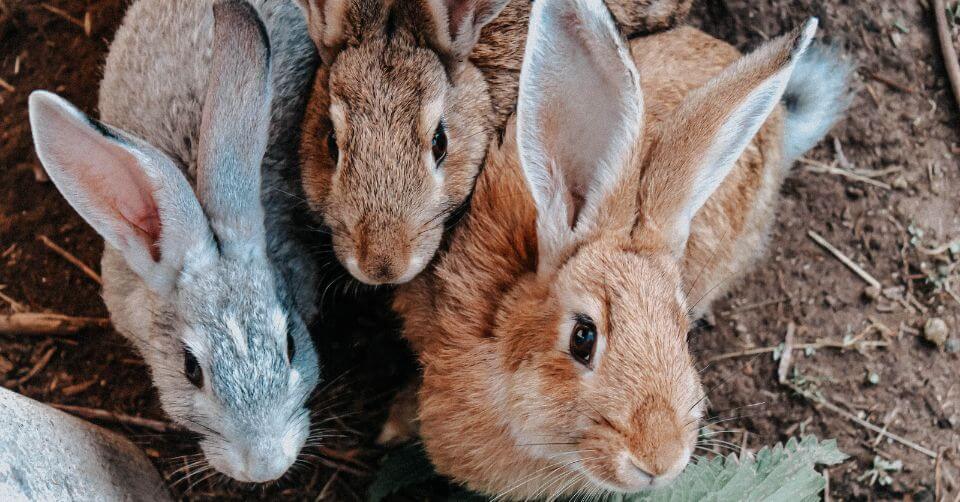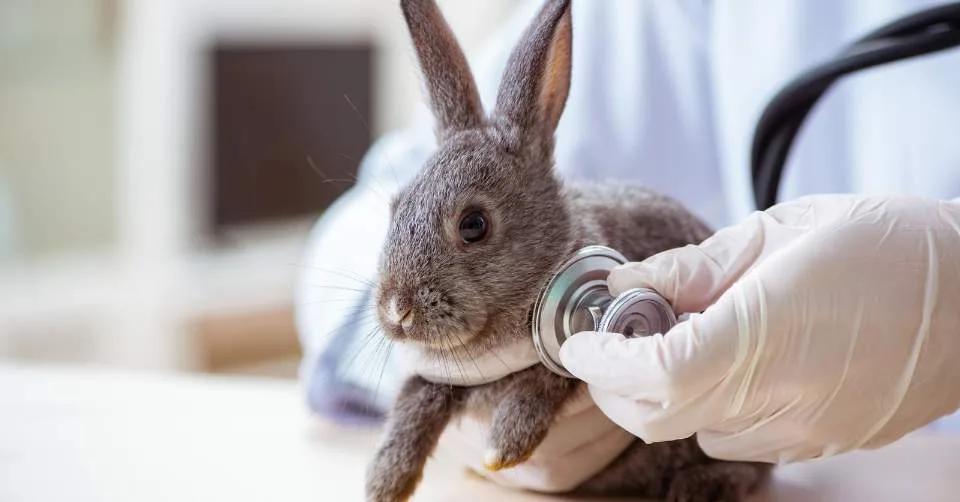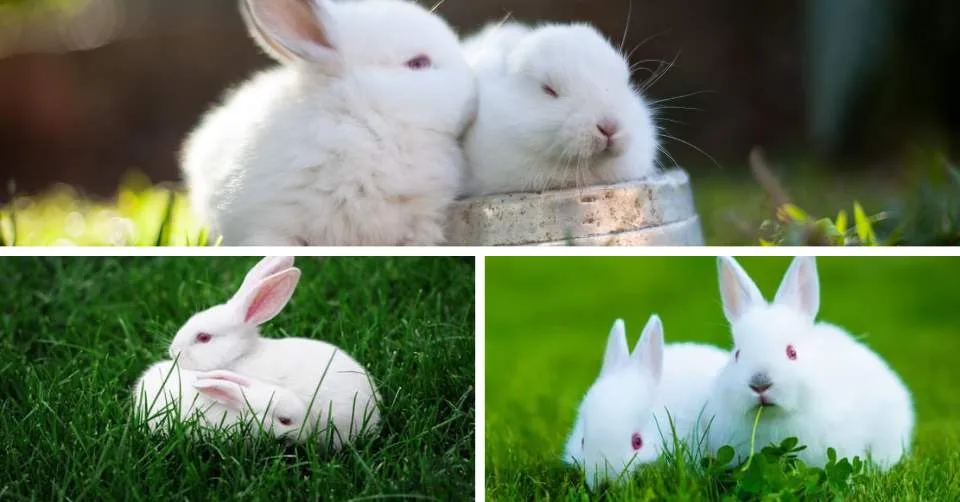If you’ve ever considered diving into the fluffy and fascinating world of rabbit breeding, you’ve come to the right place! Breeding rabbits can be a rewarding and enjoyable hobby, but it’s important to do it responsibly to ensure the well-being of your furry friends. In this comprehensive guide, we’ll take you through everything you need to know about rabbit breeding, from selecting the healthiest rabbits to weaning and separating kits. So, let’s hop to it!

Laying the Groundwork: The Importance of Research and Education in Rabbit Breeding
Rabbit Breeding Basics: Understanding the Fundamentals
Before diving into bunny breeding, it’s essential to learn the fundamentals. Familiarize yourself with rabbit anatomy, reproductive cycles, and the general behavior of rabbits. By understanding the basics, you’ll be better equipped to navigate the ins and outs of rabbit breeding successfully.
Breed Specifics: Getting to Know Your Rabbits
Each rabbit breed has its unique characteristics and needs. Research the breeds you plan to work with, including their temperaments, specific care requirements, and potential health concerns. By becoming an expert on your chosen breeds, you’ll be better prepared to manage their breeding process and ensure their overall well-being.
Networking and Mentorship: Learning from the Pros
Connect with experienced rabbit breeders, join rabbit clubs, and attend local events to learn from those who have been in the field for years. Seek out a mentor who can guide you through the process, answer your questions, and share valuable insights. Networking and mentorship will help you gain practical knowledge and avoid common pitfalls in rabbit breeding.
Keeping Abreast of Industry Trends: Staying Informed and Adapting
Rabbit breeding is a constantly evolving field, with new discoveries and best practices emerging regularly. Stay informed by subscribing to industry publications, attending seminars, and joining online forums. By keeping up-to-date with the latest trends and advancements, you’ll be able to adapt your breeding program accordingly and stay ahead of the curve.
Legalities and Regulations: Ensuring Compliance
Before starting your rabbit breeding venture, research the relevant laws and regulations in your area. This may include zoning restrictions, licensing requirements, and animal welfare standards. Familiarizing yourself with these regulations will ensure you operate within the law and avoid any potential issues down the line.
Preparing for Challenges: Anticipating and Overcoming Hurdles
Rabbit breeding can be a rewarding but challenging endeavor. Be prepared to face obstacles, such as health issues, breeding difficulties, or unexpected expenses. By anticipating potential challenges and educating yourself on how to address them, you’ll be better equipped to navigate the ups and downs of rabbit breeding with confidence and grace.

Creating a Cozy and Safe Rabbit Haven: Preparing Housing and Supplies
Customized Comfort: Tailoring Housing Requirements to Your Rabbits
To begin breeding rabbits, prepare comfortable and safe housing that caters to their individual needs. Provide appropriately sized enclosures for each rabbit, ensuring they have enough space for movement and relaxation. Create separate living spaces for each rabbit to maintain privacy and prevent unwanted interactions. When building the enclosures, use sturdy materials and secure latches to keep rabbits safe from potential predators or escape attempts.
Bon Appétit: Crafting a Balanced Diet for Your Rabbits
Healthy rabbits require a well-rounded diet that includes fresh water, quality feed, and hay. Opt for pelleted rabbit feed, ensuring that it has the appropriate protein, fiber, and nutrient levels for your rabbits’ age, breed, and reproductive status. Hay, such as Timothy or alfalfa, should be available at all times to promote healthy digestion and dental health. In addition to hay and pellets, offer small amounts of fresh vegetables and fruits as treats, but use caution to avoid overfeeding, as this can lead to health issues. By providing a balanced diet, you’ll keep your rabbits in tip-top shape.
The Finer Things: Grooming and Hygiene Essentials for Rabbit Care
Maintaining proper grooming and hygiene is crucial for your rabbits’ health and well-being. Invest in a grooming kit complete with a soft brush, flea comb, nail clippers, and scissors. Groom your rabbits regularly, paying special attention to long-haired breeds that need more frequent grooming to prevent matting and tangling.
Breath Easy: Ensuring Proper Ventilation and Temperature Control
Since rabbits are sensitive to extreme temperatures, it’s essential to provide a well-ventilated and temperature-controlled environment. Ensure that enclosures have adequate air circulation to prevent overheating and maintain a consistent temperature within the optimal range for rabbits (between 60°F and 75°F or 15°C and 24°C). Protect your rabbits’ living space from direct sunlight, drafts, and humidity to keep them comfortable.
Friends and Fun: Socialization and Enrichment for Happy Rabbits
Though it’s necessary to house breeding rabbits separately, socialization and enrichment are still vital for their well-being. Interact with your rabbits regularly through gentle handling and playtime, fostering trust and bonding. In addition, provide enrichment toys and activities within their enclosures, such as tunnels, hiding spots, and chew toys, to keep them entertained and mentally stimulated.
Out of Harm’s Way: Protecting Rabbits from Common Hazards
Rabbit-proof your environment to ensure your breeding rabbits’ safety and well-being. Keep electrical cords, toxic plants, and other potential hazards out of reach, and supervise your rabbits closely when they’re outside their enclosures. By being proactive about protecting your rabbits from common hazards, you’ll create a safer and more enjoyable breeding experience.

Picking the Cream of the Crop: Selecting Healthy Rabbits for Breeding
The Perfect Pair: Choosing Compatible Breeding Partners
When selecting rabbits for breeding, it’s essential to find a compatible pair. Consider factors like size, temperament, and breed compatibility when deciding on a match. A harmonious duo will make the breeding process smoother and more successful.
The Golden Standard: Evaluating Physical Health
Before introducing rabbits for breeding, ensure both the doe and the buck are in peak physical condition. Check for signs of illness or injury, and make sure they’re up-to-date on vaccinations and parasite control. A healthy rabbit is a happy rabbit, and happy rabbits make for successful breeding.
Digging Deeper: Assessing Your Rabbits’ Genetic Health
When choosing rabbits for breeding, it’s vital to consider their genetic health. By researching their lineage and ensuring they’re free of any hereditary health issues, you’ll be increasing the likelihood of producing strong, healthy offspring. This is especially important if you’re breeding rabbits for show or conservation purposes.
Age is Just a Number: Choosing Rabbits at the Right Age for Breeding
Ensure both your doe and buck are of appropriate breeding age. Does should be at least six months old, while bucks can be ready for breeding at around four months. By waiting until your rabbits are mature enough to breed, you’ll be promoting their health and increasing the chances of a successful mating.
It’s All About Personality: Observing Temperament and Behavior
When selecting rabbits for breeding, their temperament and behavior are just as important as their physical health. Choose rabbits that are friendly, calm, and easy to handle, as these traits are more likely to be passed down to their offspring. A good-natured rabbit will make the breeding process more enjoyable for both you and the animals involved.
Breeding for the Greater Good: Prioritizing the Health of the Rabbit Population
As a responsible breeder, always prioritize the health and well-being of the rabbit population. Avoid inbreeding or breeding rabbits with known health issues, as this can lead to genetic problems in future generations. By being mindful of the long-term consequences of your breeding choices, you’ll be contributing to a healthier, happier rabbit community.

Health Care and Disease Prevention
The Bunny Checkup: Routine Health Assessments
Regular health checkups are the cornerstone of keeping your rabbits in prime condition. Make it a habit to examine your rabbits for any signs of illness or discomfort, like nasal discharge, weight loss, or changes in behavior. Catching potential problems early on will make it easier to keep your rabbits healthy and thriving.
Doctor, Doctor! Regular Vet Visits
Don’t underestimate the power of a good veterinarian! Schedule routine vet visits for your rabbits to ensure they’re up-to-date on vaccinations and receive professional health assessments. A knowledgeable vet will be your go-to source for advice on rabbit care and potential health concerns.
Preventive Measures: Combating Common Rabbit Diseases
An ounce of prevention is worth a pound of cure, as they say. Familiarize yourself with common rabbit diseases like snuffles, GI stasis, and ear mites, and learn how to prevent and treat these conditions. By staying proactive, you’ll be better equipped to keep your rabbits healthy and nip potential problems in the bud.
A Clean Home is a Happy Home: Hygiene and Sanitation
Maintaining a clean and sanitary environment is key to keeping your rabbits disease-free. Regularly clean and disinfect their enclosures, food and water dishes, and any toys or accessories. By staying on top of cleanliness, you’ll be reducing the risk of illness and creating a happy, healthy space for your rabbits to thrive.
Keep the Bugs at Bay: Parasite Prevention
Parasites can be a real pain in the tail for your rabbits. Stay ahead of the game by regularly checking your rabbits for signs of external parasites like fleas, ticks, or mites. If you notice any uninvited guests, consult your veterinarian for advice on the best course of treatment.
Under Lock and Key: Quarantine Procedures for New Arrivals
When introducing new rabbits to your breeding program, it’s essential to follow proper quarantine procedures. Keep newcomers separate from your existing rabbits for a few weeks to monitor their health and prevent the spread of potential illnesses. After a thorough health check and the all-clear from your vet, you can gradually introduce your new rabbits to the rest of the gang.
Planning Your Rabbit Breeding Program
Setting Your Goals: Defining Your Breeding Objectives
Before you embark on your rabbit breeding journey, take a moment to set clear goals for your program. Are you aiming to breed rabbits for show, companionship, or conservation? Identifying your objectives will help guide your decision-making and ensure you stay on track for success.
The Gene Pool: Selecting the Right Rabbits for Your Program
With your goals in mind, you’ll need to choose the right rabbits to kick off your breeding program. Consider factors like breed characteristics, temperament, and genetic traits when selecting your rabbits. By carefully handpicking your starter rabbits, you’ll be laying a strong foundation for your program’s success.
The Art of Timing: Planning Your Breeding Schedule
The key to a successful rabbit breeding program lies in perfect timing. Create a well-planned breeding schedule that considers factors like your rabbits’ age, reproductive cycles, and seasonal factors. By establishing a solid schedule, you’ll ensure that your rabbits are in peak condition for breeding and avoid overburdening them with back-to-back pregnancies.
Let’s Talk Paperwork: Record-Keeping and Organization
A well-organized breeding program is a successful one. Invest in a system to keep track of important details like breeding dates, pedigrees, and health records. By maintaining up-to-date records, you’ll be able to make informed decisions about your breeding program and track your progress over time
Keeping it Ethical: Responsible Breeding Practices
As a rabbit breeder, you have a responsibility to ensure the well-being of your animals. Always prioritize your rabbits’ health and happiness, avoiding practices like inbreeding or overbreeding. By adhering to ethical breeding practices, you’ll be contributing to the overall betterment of rabbit breeding and promoting the welfare of these adorable creatures.
Sharing the Love: Marketing and Networking
Once you’ve established your breeding program, it’s time to share your passion with others. Connect with fellow rabbit enthusiasts, attend local events, and join online forums to learn from others and showcase your rabbits. Networking with like-minded individuals will help you stay informed about industry trends, find potential buyers, and continue growing your rabbit breeding program.

Love is in the Air: The Ins and Outs of the Rabbit Breeding Process
Setting the Stage: Preparing for Mating
Before introducing your rabbits for mating, ensure they’re both in good health and the environment is stress-free. Double-check their enclosures for safety and cleanliness, and make sure each rabbit is well-fed and relaxed. A peaceful atmosphere will make for a smooth and successful mating experience.
The Main Event: Introducing Your Rabbits
When it’s time for your rabbits to meet, always introduce the doe to the buck’s territory (never the other way around). This will help prevent territorial disputes and make the mating process smoother. Keep a watchful eye on the rabbits during their encounter, as they might need a little time to warm up to each other. Remember, patience is key!
Courtship and Mating: Bunny Love in Action
Rabbit courtship can be a whirlwind affair, with bucks often chasing does and performing a little dance to win their affection. Once the doe is receptive, she’ll allow the buck to mount her, and the actual mating process is usually brief. To ensure a successful mating, you may want to give them a couple of tries.
Post-Mating Care: Ensuring a Healthy Pregnancy
After a successful mating, it’s important to keep an eye on your doe for any signs of pregnancy. Monitor her appetite, behavior, and weight, and provide her with all the necessary care to ensure a healthy pregnancy. Your doe may need a little extra attention during this time, so be prepared to spoil her with love and care.
Repeat Performances: Planning for Future Breedings
Once your rabbits have successfully mated, it’s time to look ahead to future breedings. Plan your breeding schedule carefully, ensuring that your rabbits have plenty of time to rest and recover between pregnancies. By pacing your breeding program responsibly, you’ll be promoting the health and well-being of your rabbits and fostering a successful rabbit breeding venture.
The Waiting Game: Monitoring Pregnancy and Preparing for Birth
As your doe’s pregnancy progresses, keep a close eye on her health and comfort. Provide her with a nesting box as the due date approaches, and monitor her for any signs of distress or complications. By staying vigilant, you’ll be ready to step in if necessary and ensure a safe and happy birthing experience for your doe and her kits.
Birth and Newborn Care
When the big day arrives, give your doe privacy and space to deliver her kits. After the birth, check on the doe and her newborns to ensure their health and well-being. Keep the nesting box clean and dry, and be prepared to intervene if the doe isn’t properly caring for her kits.

From Birth to Adulthood: Post-Breeding Care and Management of Rabbits
The First Few Days: Caring for Newborn Kits
In the initial days after birth, your primary focus should be on keeping the kits warm, clean, and well-fed. Monitor their growth and ensure they’re nursing regularly. If the doe struggles to care for her kits, be prepared to step in and offer assistance, like providing supplemental feeding or helping to keep the nest clean.
Growing Up: Meeting Your Kits’ Developmental Milestones
As your kits grow, you’ll need to cater to their changing needs. Introduce solid foods gradually and provide ample space for them to explore and play. Keep a close eye on their physical and social development, ensuring they’re hitting key milestones like opening their eyes, hopping, and interacting with their siblings.
Social Butterflies: Encouraging Positive Socialization
Socialization is crucial for the well-being of your rabbits. Introduce your kits to different people, animals, and environments to help them become well-adjusted and confident individuals. Positive social experiences will prepare your kits for future interactions with other rabbits, animals, and humans.
Bunny Training: Teaching Good Manners and Basic Skills
Start teaching your kits basic skills and manners from a young age. Encourage litter training, proper eating habits, and gentle handling to set them up for success as they grow. Consistent training and positive reinforcement will help your kits become well-behaved, happy rabbits.
Weaning Time: Transitioning Kits from Mom’s Milk to Solid Food
When your kits are around six to eight weeks old, it’s time to begin the weaning process. Gradually introduce solid foods while reducing their dependence on the doe’s milk. Monitor your kits during this transition, ensuring they’re adapting well to their new diet and gaining weight appropriately.
Ready for the World: Separating Kits and Preparing for New Homes
As your kits reach maturity, it’s time to separate them from their mother and siblings. Establish separate living spaces for each rabbit to prevent unwanted breeding or territorial disputes. Start preparing your kits for their future homes, whether that’s as part of your breeding program or with new, loving families.
Keeping Track: Maintaining Records of Your Kits’ Progress
Stay organized and up-to-date with each kit’s progress by keeping detailed records. Track their growth, health, and developmental milestones, as well as any noteworthy traits or behaviors. These records will be invaluable when making decisions about future breeding, as well as providing valuable information to potential buyers.

Conclusion
Rabbit breeding can be a rewarding and enjoyable hobby, but it’s important to approach it with responsibility, knowledge, and care. By following this comprehensive guide, you’ll be well on your way to producing healthy, happy bunnies while fostering a passion for these adorable creatures.
